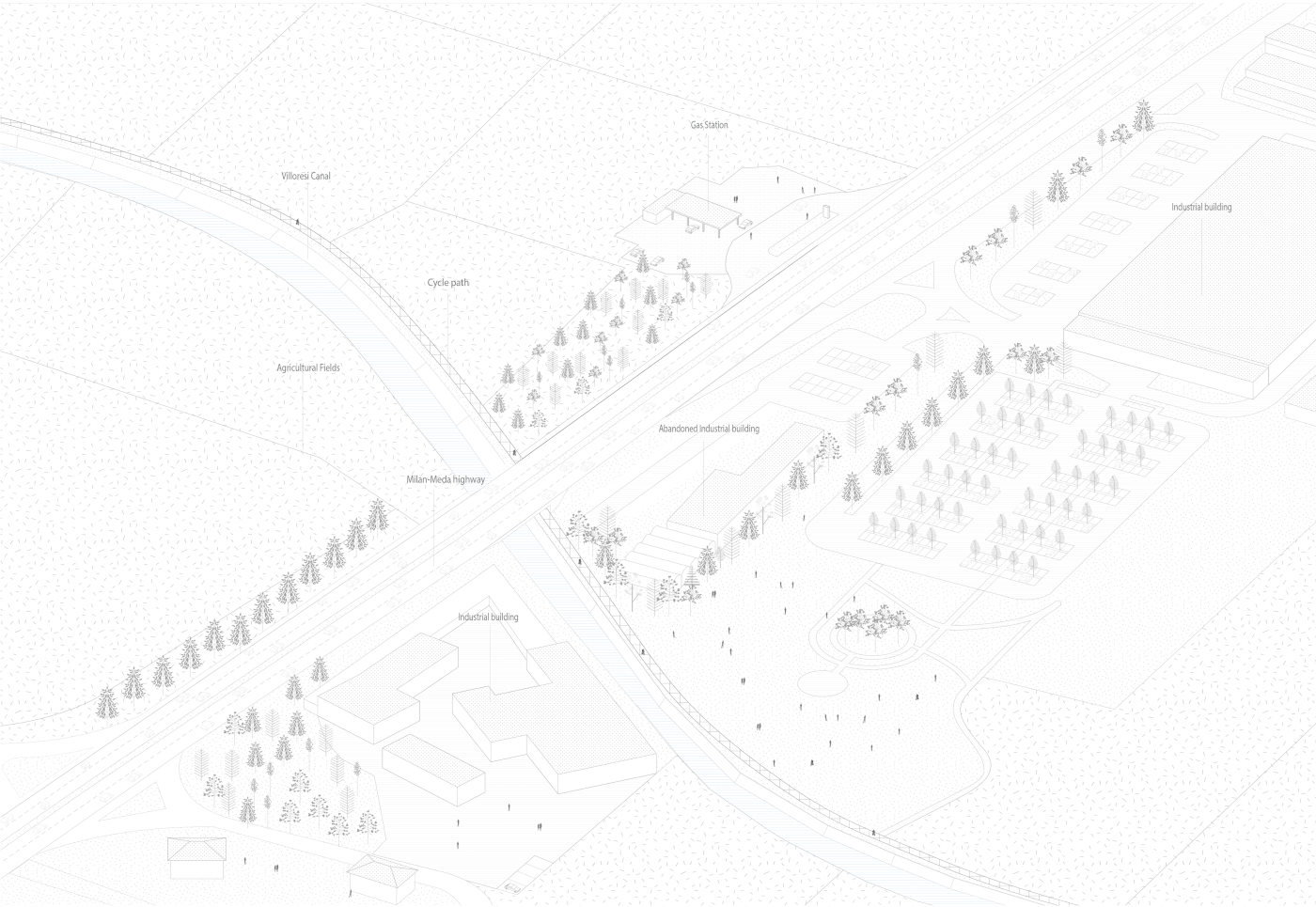FROM LINES TO SPACES
NEW LINEAR CITIES WITHIN THE CITY
Politecnico di Milano – School of Architecture, Urbanism, Construction Engineering - A.Y. 2016-2017
Team: Sophio Paksashvili, Matteo Pigni, Lorenzo Summonte
Professors: Nicolò Privileggio, Fabrizia Berlingeri, Stefano di Vita
Tutors: Beatrice Galimberti, Matteo Motti, Stefano Ivaldi
The term porosity indicates, in the specific characteristics of a material, the percentage of the cavities, voids, as opposed to the solid space, of solids, which constitutes the system, just as in a sponge. This definition is also applicable to those areas that have always different relationship between the empty spaces, the vegetation and the space dedicated to agriculture, and the filled spaces, the soil built. In the various areas taken into account the notion of porosity assumes different facets either according to the own characteristics of the territories analyzed in relation to the sensitivity with which they were observed. Porosity is about voids and their surfaces, in terms of environment. It’s the permeability of the soil and the green contrasting with the grey. It is about voids and their accessibility - how many of those voids can actually be used by the public. It is about networks and connectivity - the possibility of moving in the territory in a network of small roads, pedestrian and cycle paths.
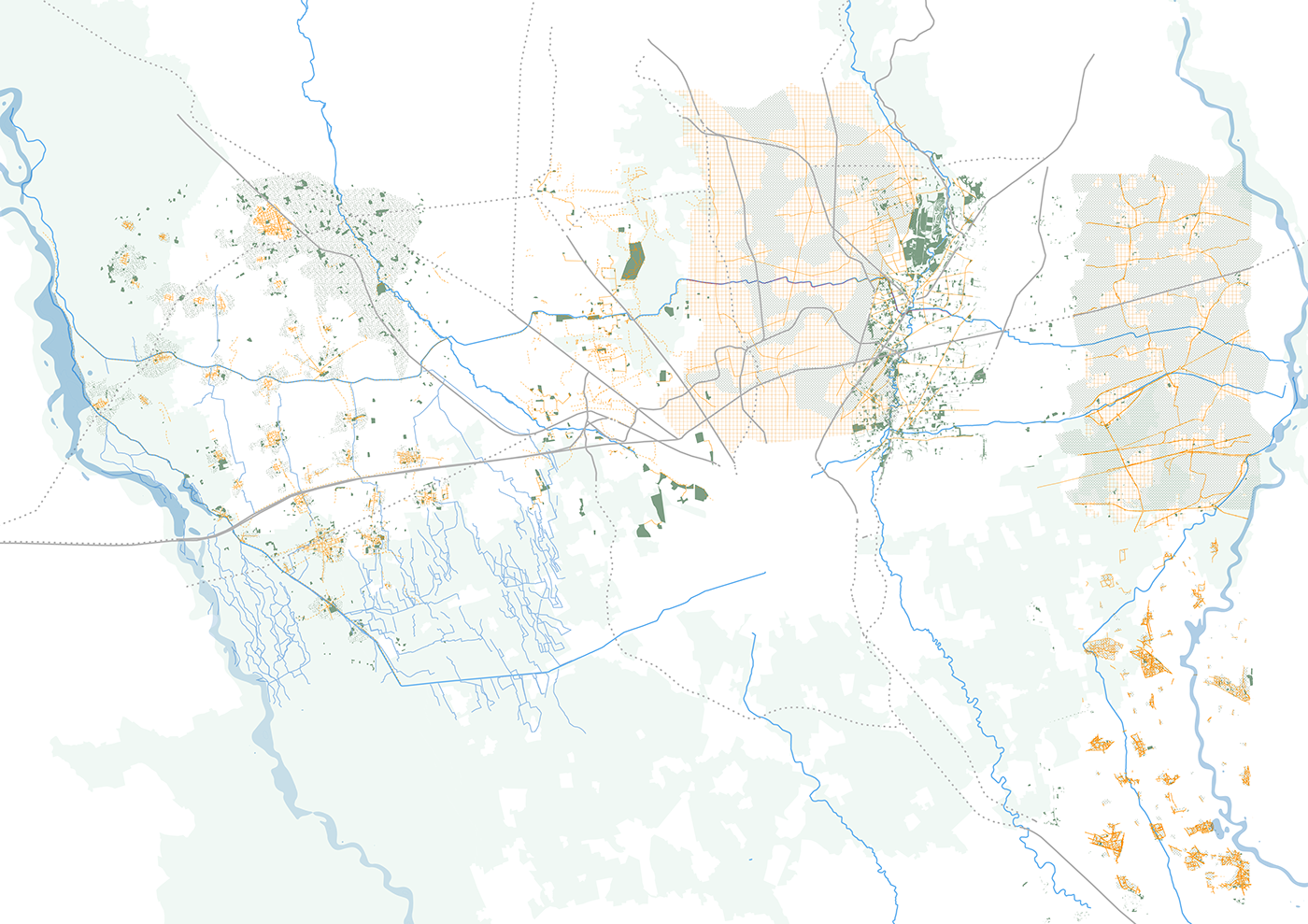
The investigation on the porosity of this area starts from using the three lenses:
•The Green-Grey-Blue lense looks at the voids in terms of materials and surfaces.
•The Green-Grey-Blue lense looks at the voids in terms of materials and surfaces.
•The Private-Public lense looks at the voids according to their accessibility.
•The Network lense is about the connectivity of the system, both for slow car mobility and for pedestrian and bicycle mobility.
The combination of these lenses led to interpretative maps that merge together, they are both about connectivity, accessibility and environment.
The combination of these lenses led to interpretative maps that merge together, they are both about connectivity, accessibility and environment.
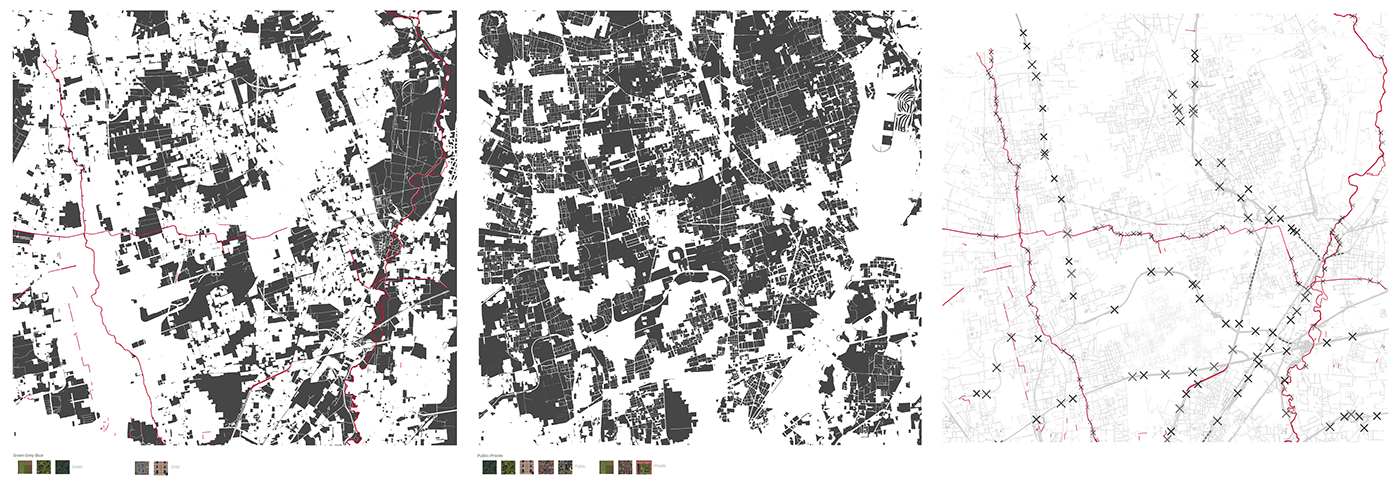
A map, named the sponge map, looks at the territory as a system made of connected fluxes through barriers, between the small cities.
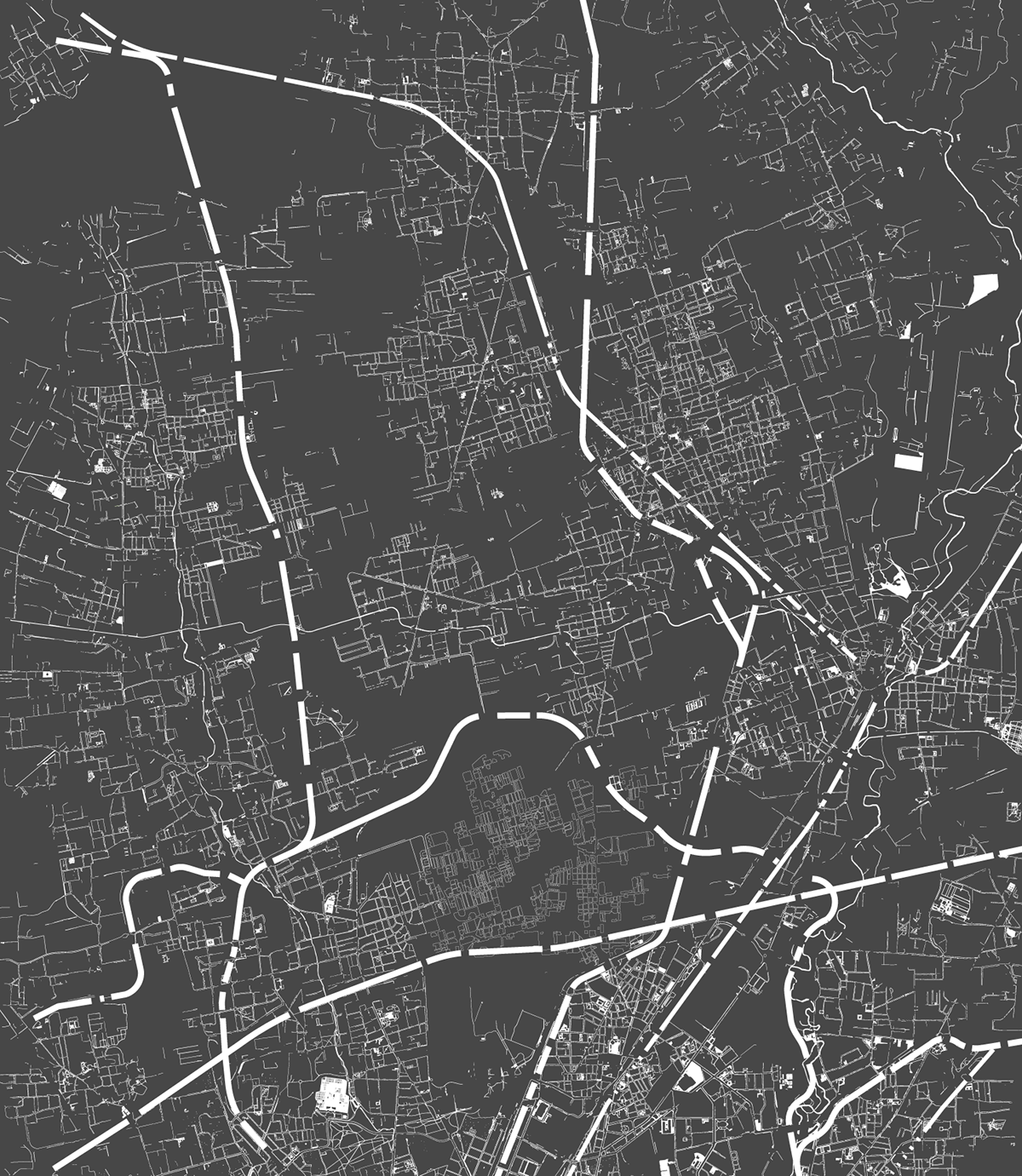
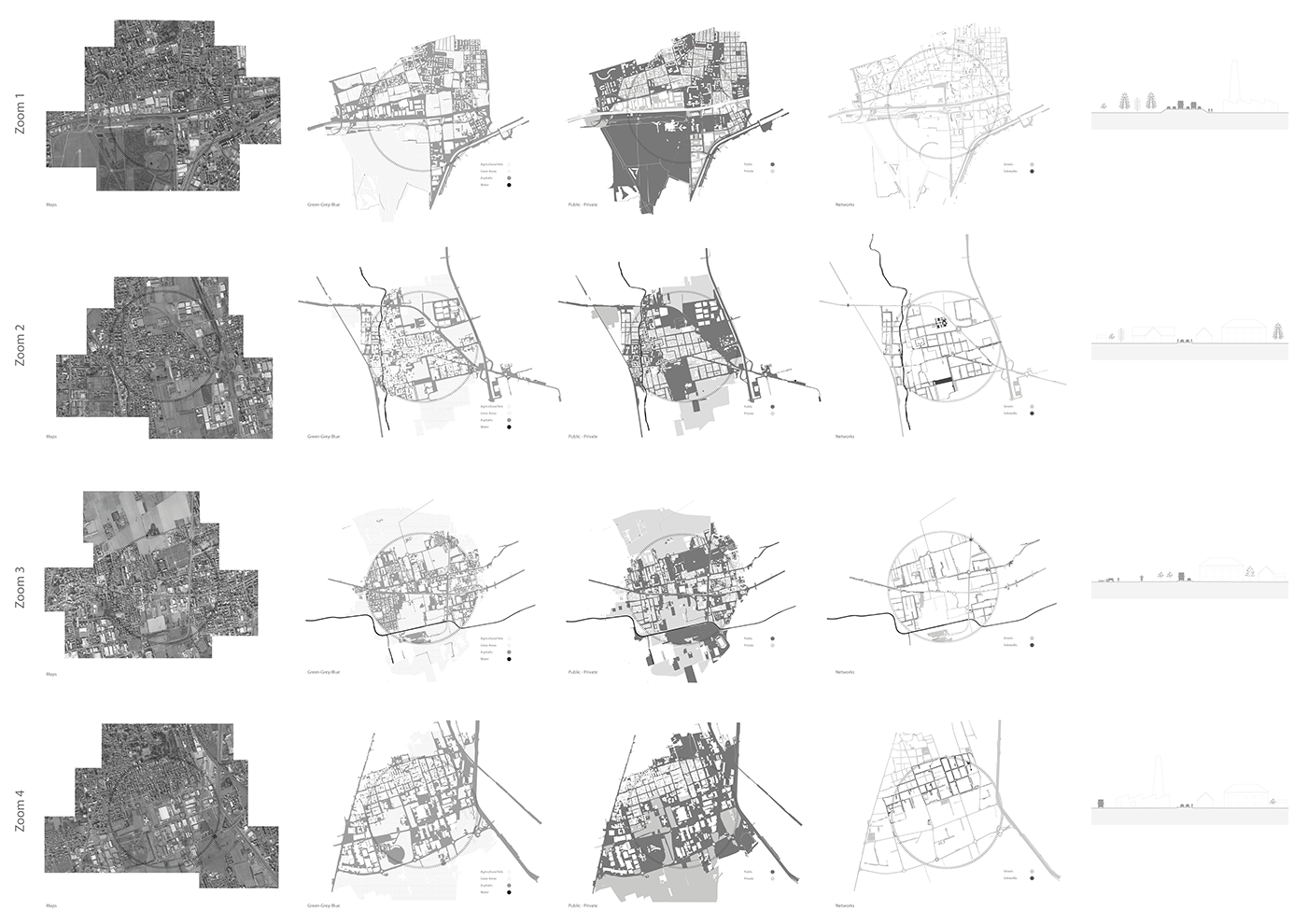
Finally, three axonometric drawings are created in order to diagramatically represent a synthetic view of the systems. From these drawings, a contrast begins to emerge through the porosity of these areas. The large green fields that attempt to resist the expansion of the small density city and industries. The system of small green spaces within the high density city that attempts to form a relationship with the green unaccessible porosity of the fields.
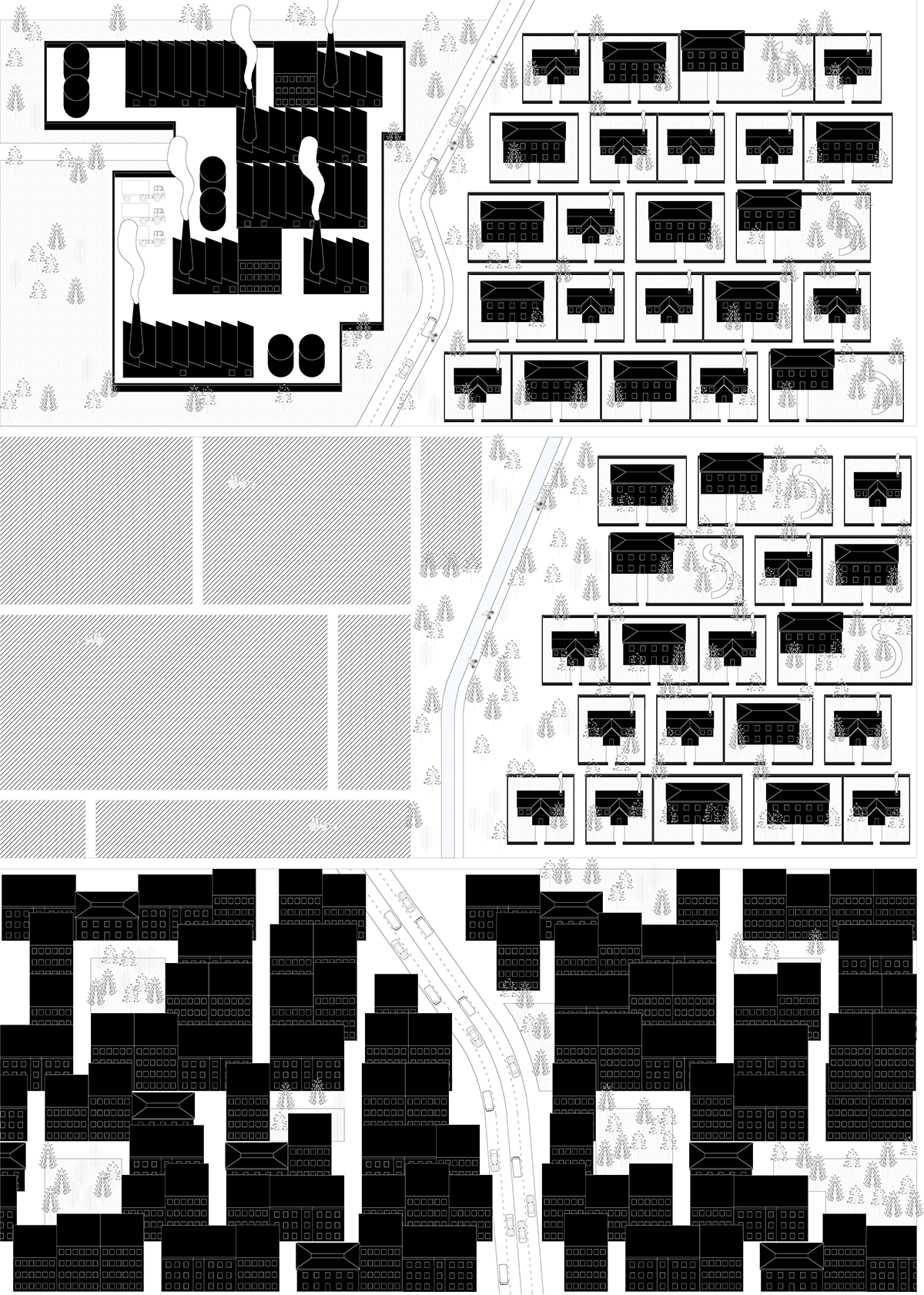
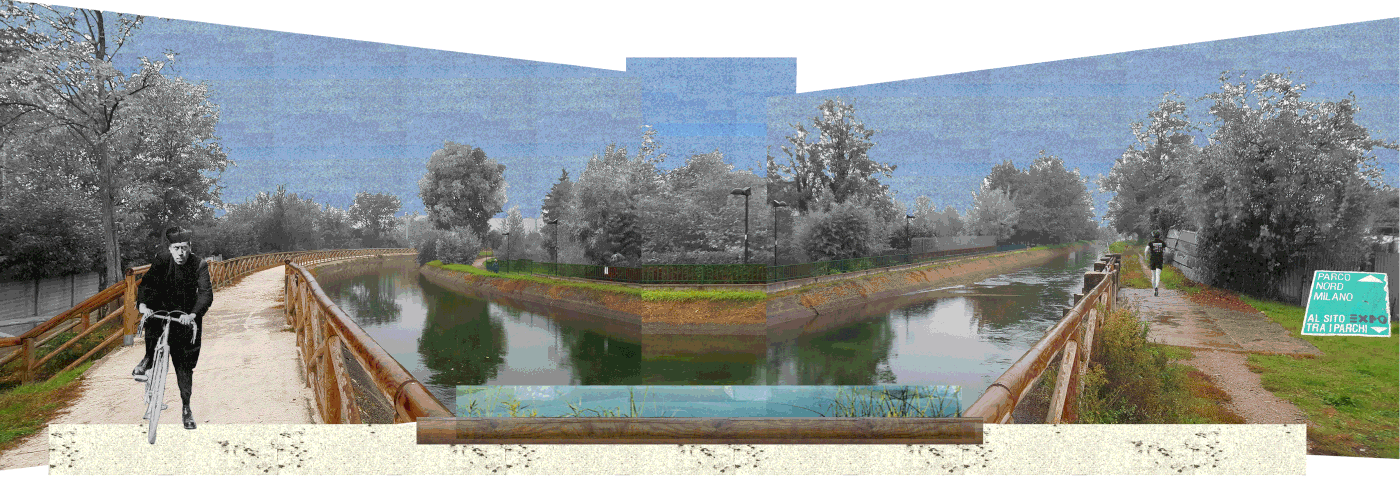
In the future car private mobility should decrease in favour of public one, and both of them will be necessarily related to the new technologies in mobility field, as selfdriven electric vehicle, drone delivery systems and energy sharing.
The rethinking of the public transportation system is necessary to face off with those cutting-edge technologies that the city is still not ready to accept. This constitutes the strategy at the metropolitan scale. New public transport lines will connect the territory as a grid, supporting the existing radiocentric transport system, leaning on the existing train stops and redeveloping existing tram and bus lines. During the investigations we also focused our attention on the vacant and unused spaces that would have been related to the path of these new transports. Being the transport not
a line itself, but also a way to modify the cities, we thought that those spaces, thanks to their proximity to the new lines, and so their being easily reachable, could be re-thought.
a line itself, but also a way to modify the cities, we thought that those spaces, thanks to their proximity to the new lines, and so their being easily reachable, could be re-thought.
The new tram lines are the first to be made and are linking the most populated area, Busto Arsizio with Monza and Sesto San Giovanni with Rho. In between those tram lines, new electric self-driven bus lines, cheaper and faster to be built, will provide connection through the other cities, making the grid of public transport denser. They will work also in the less dense areas where public transport is almost not
present. Also the system of cycle path will be involved by the strategy, the existing cycle path will be empowered and better connected. The criteria for the path of those new lines is the downgrading of car mobility in favour of public mobility, modifying the entire car line letting no more the car interfere with the public transport. This is also related to the new technologies, with self-drive systems car lane can be reduced to gain space along it, and the asphalt itself can generate electricity from the car and busses’ transit.
present. Also the system of cycle path will be involved by the strategy, the existing cycle path will be empowered and better connected. The criteria for the path of those new lines is the downgrading of car mobility in favour of public mobility, modifying the entire car line letting no more the car interfere with the public transport. This is also related to the new technologies, with self-drive systems car lane can be reduced to gain space along it, and the asphalt itself can generate electricity from the car and busses’ transit.
Different categories have been given to the actions on spaces: rented spaces to provide flexible use of areas, new catalysers to attract people, natural spaces to increase green environment, spaces engaging with water systems, landmarks as new vantage points, collective recycling to promote meeting and re-use, spaces related to the functioning of the new lines, and related to the new technologies in mobility field.
The efficiency of these two sets of actions working together is proved in four exploratory projects, useful to verify the strategy applied in different situations. In the centre of Nova Milanese, the redevelopment of the old tram line gives the possibility to rethink its main axis for pedestrians and public activities, with a new pool on Villoresi canal and co-working offices. At the borders of Cinisello Balsamo, in a high density neighbourhood, the strong reduction of the car lane and the gained public accessibility can give life to new community rented orchards and a covered marketplace to sell their products. The railway station of Garbagnate-Groane becomes an important hub thanks to the connection with the new tram line, so the vacant areas in the nearby can host public spaces for both the neighbourhood and the travellers. The importance of the switch between private and public mobility thanks to new technologies is seen in the new energy hub of the Milano-Meda, where the old fuel station is rethought as an automatic delivery hub, energy producer and point for sharing energy and vehicles.
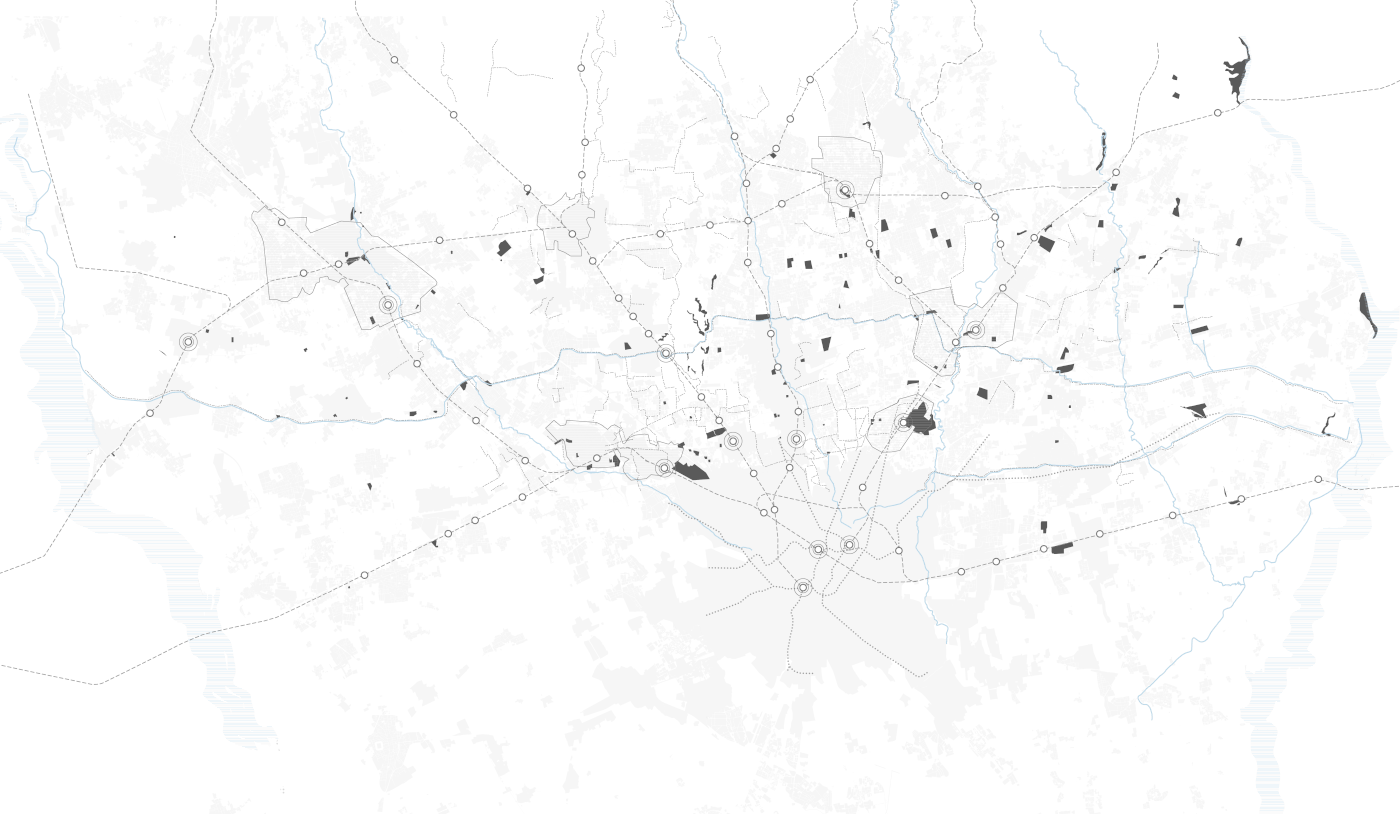
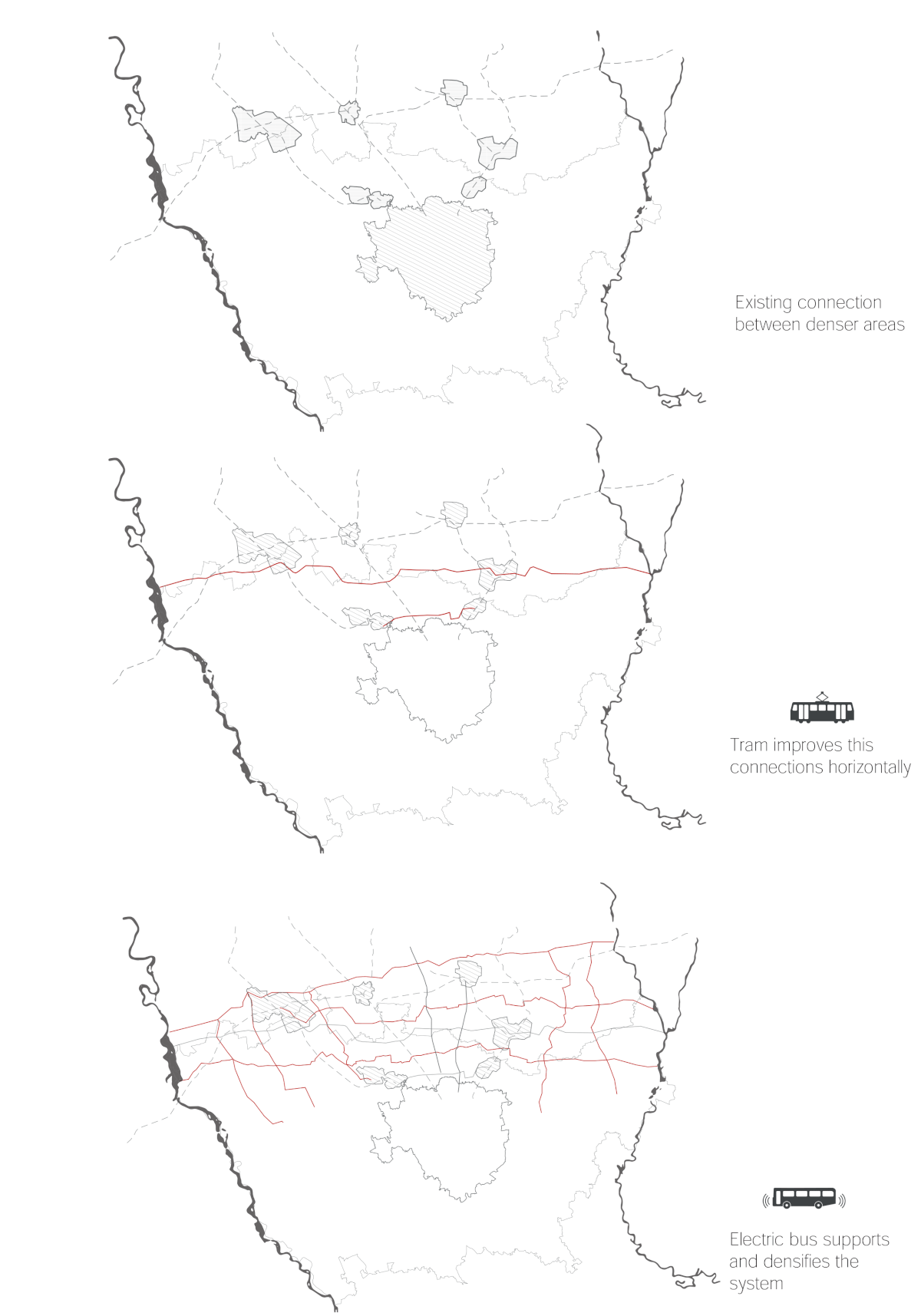
Actions on lines

Actions on spaces
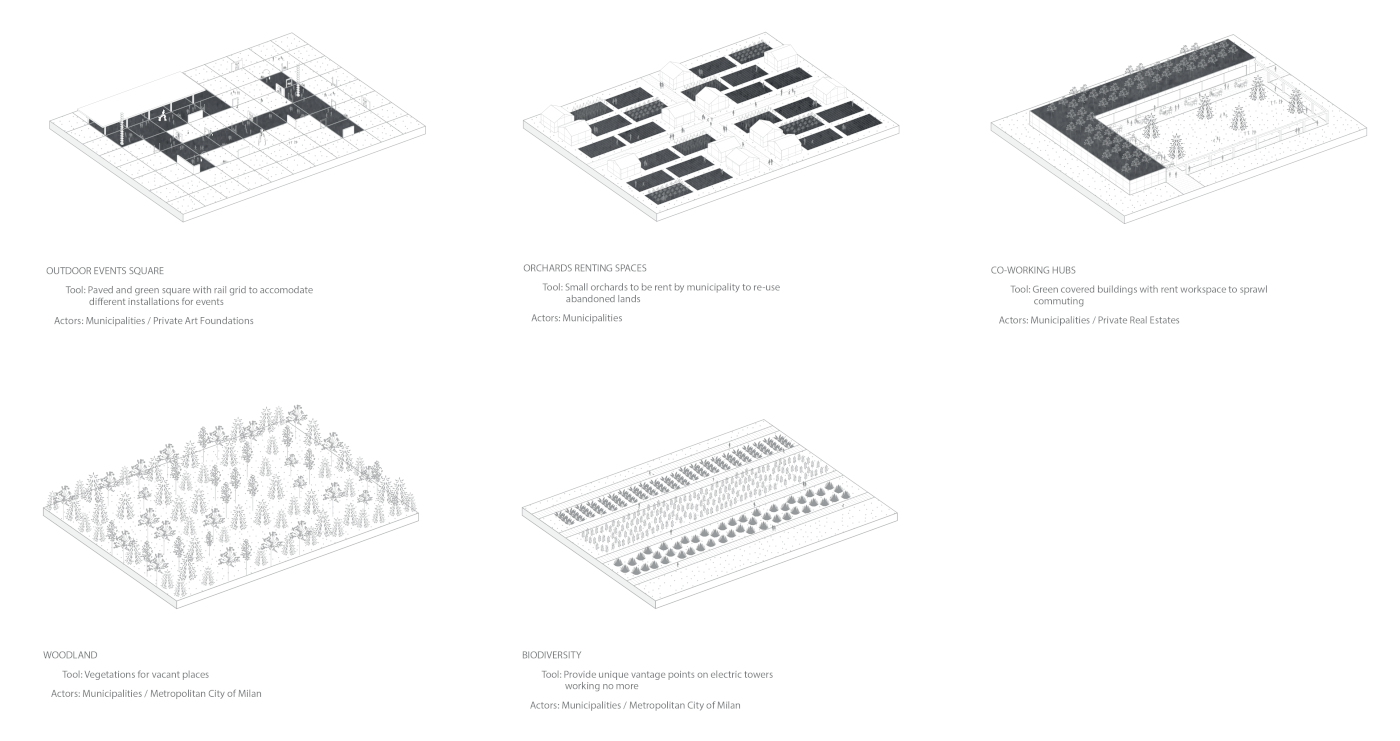
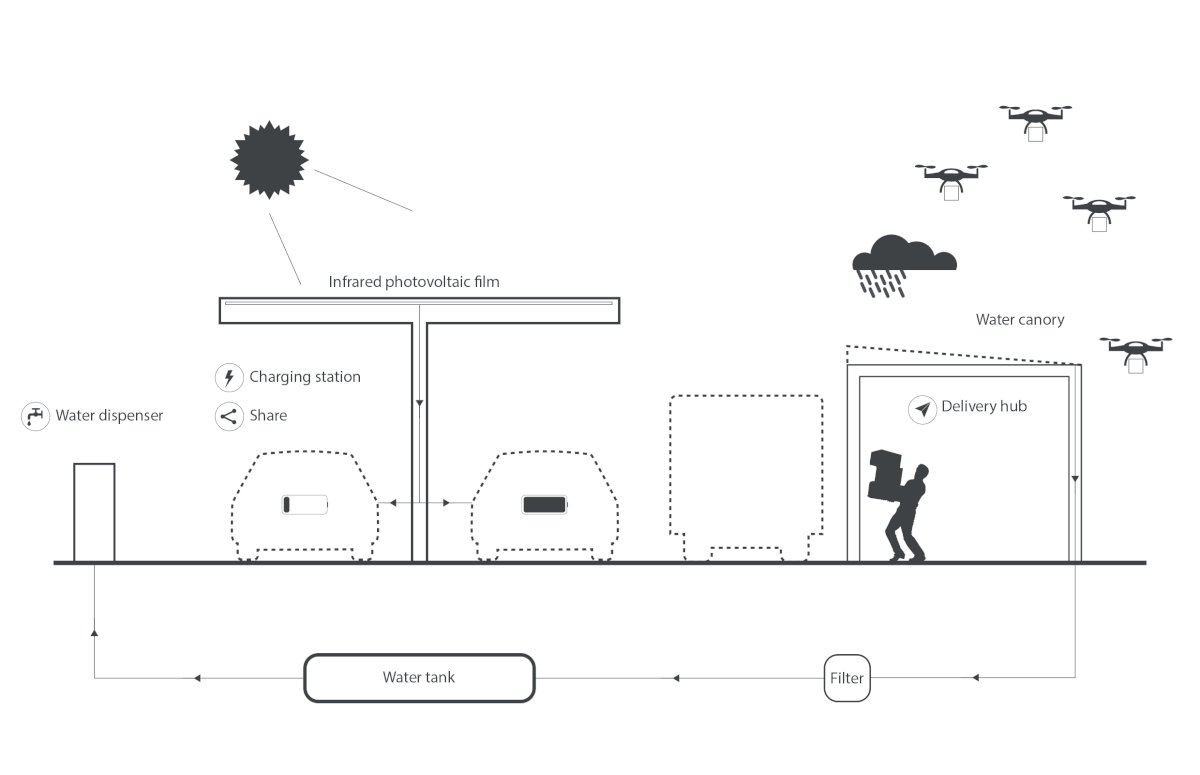
Exploratory Project: Nova Milanese
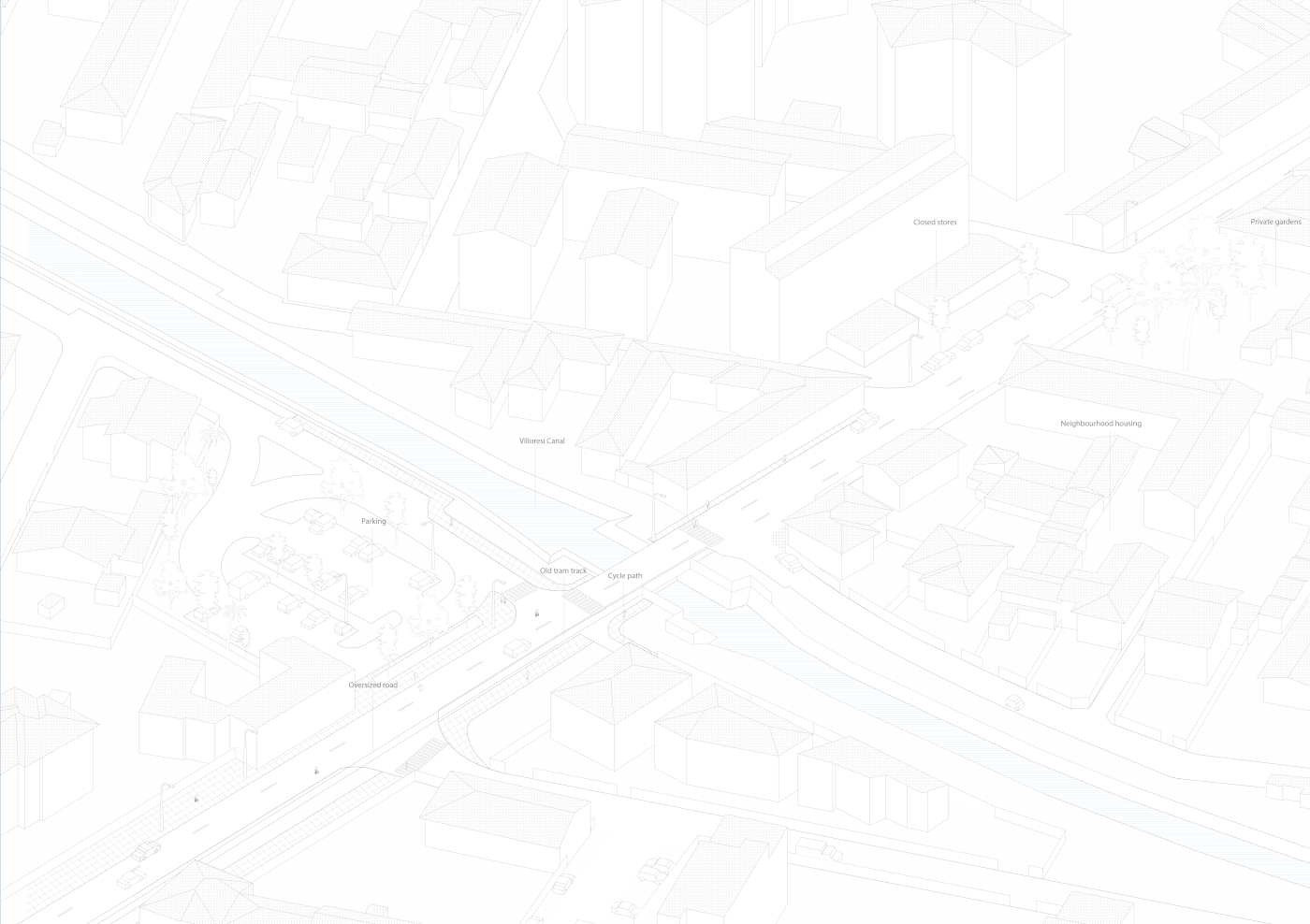
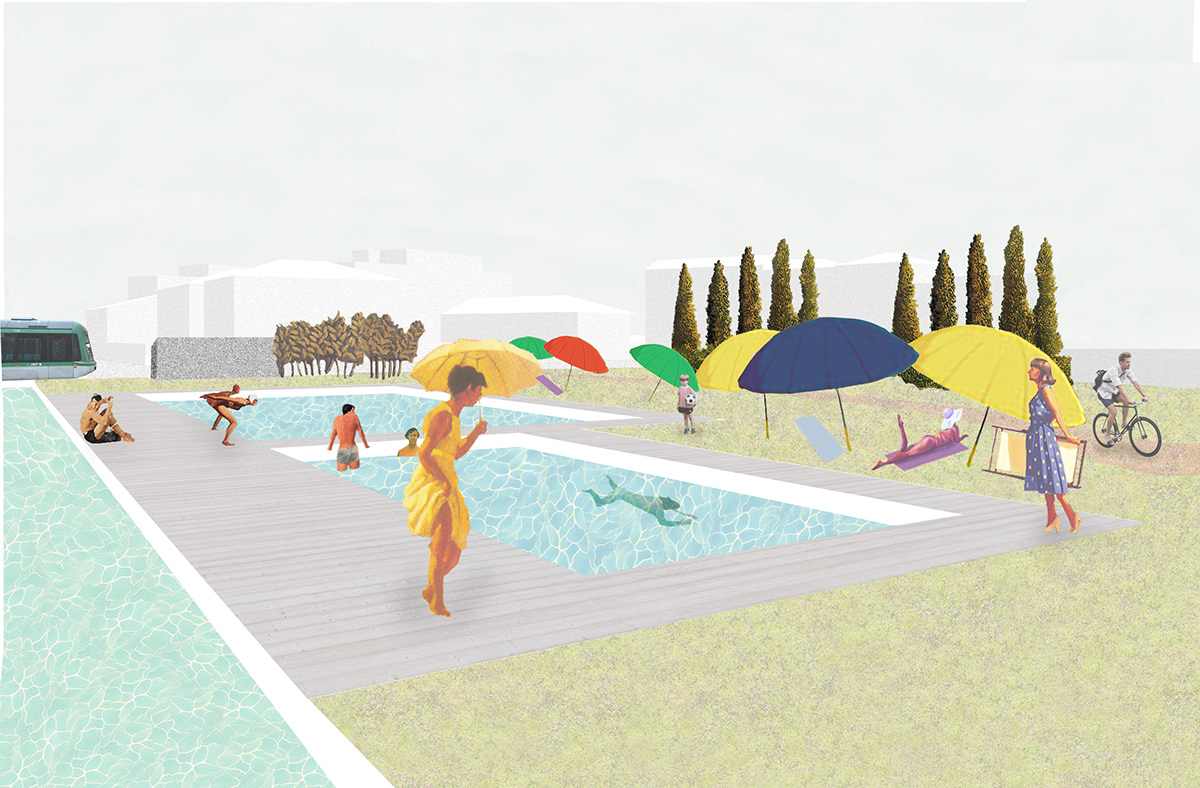
Exploratory Project: Cinisello Balsamo
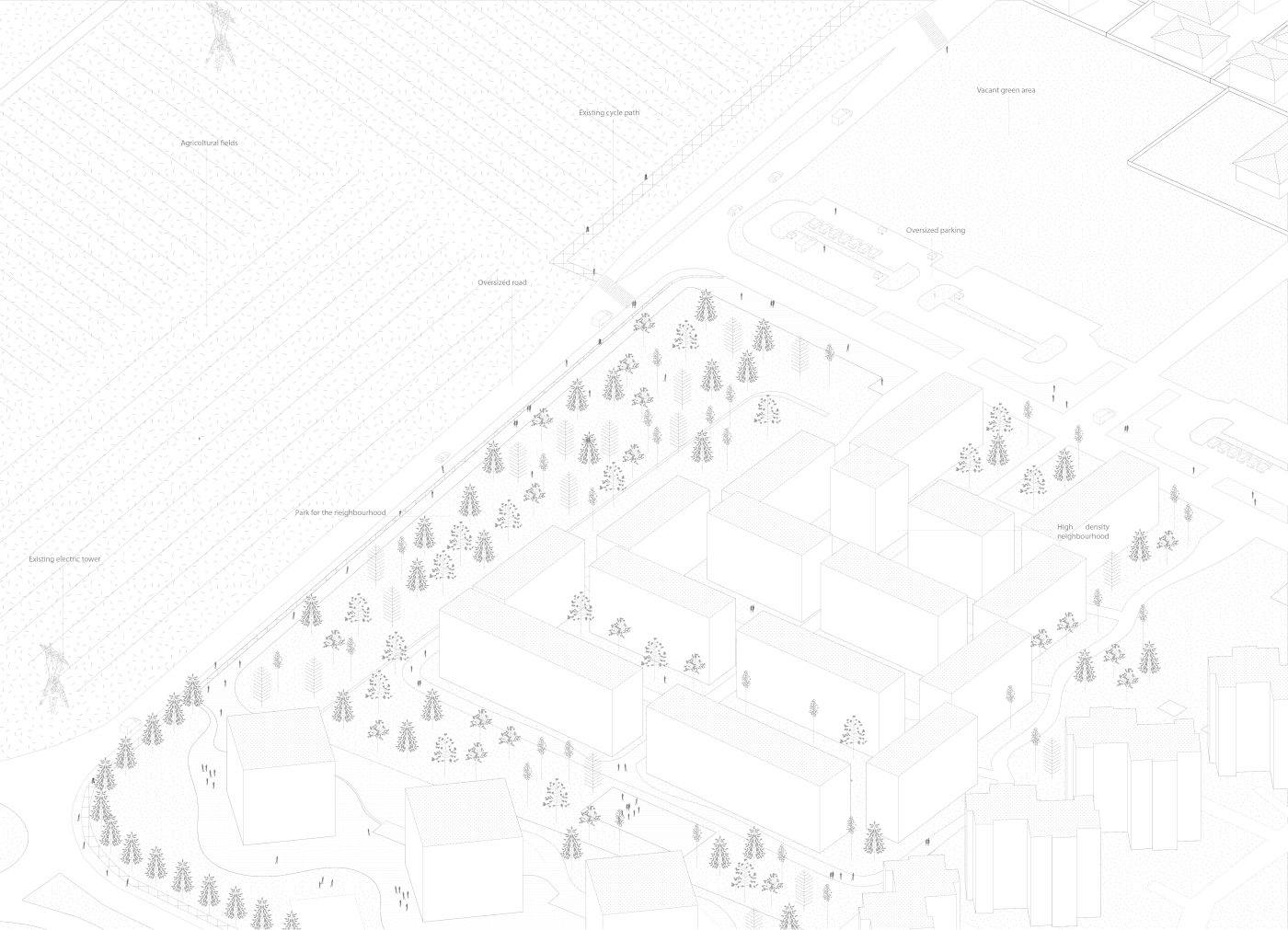

Exploratory Project: Garbagnate Groane interchange station
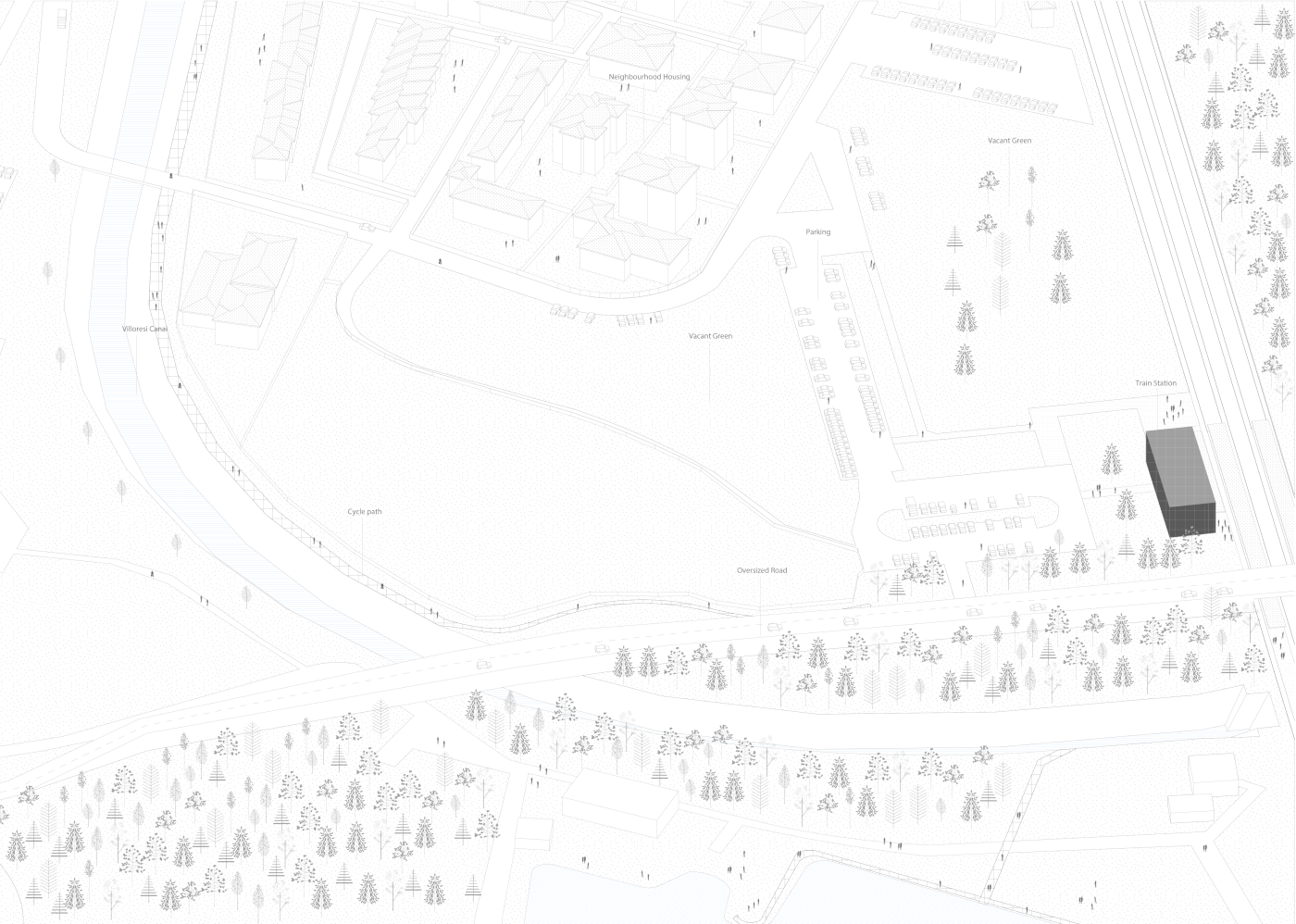
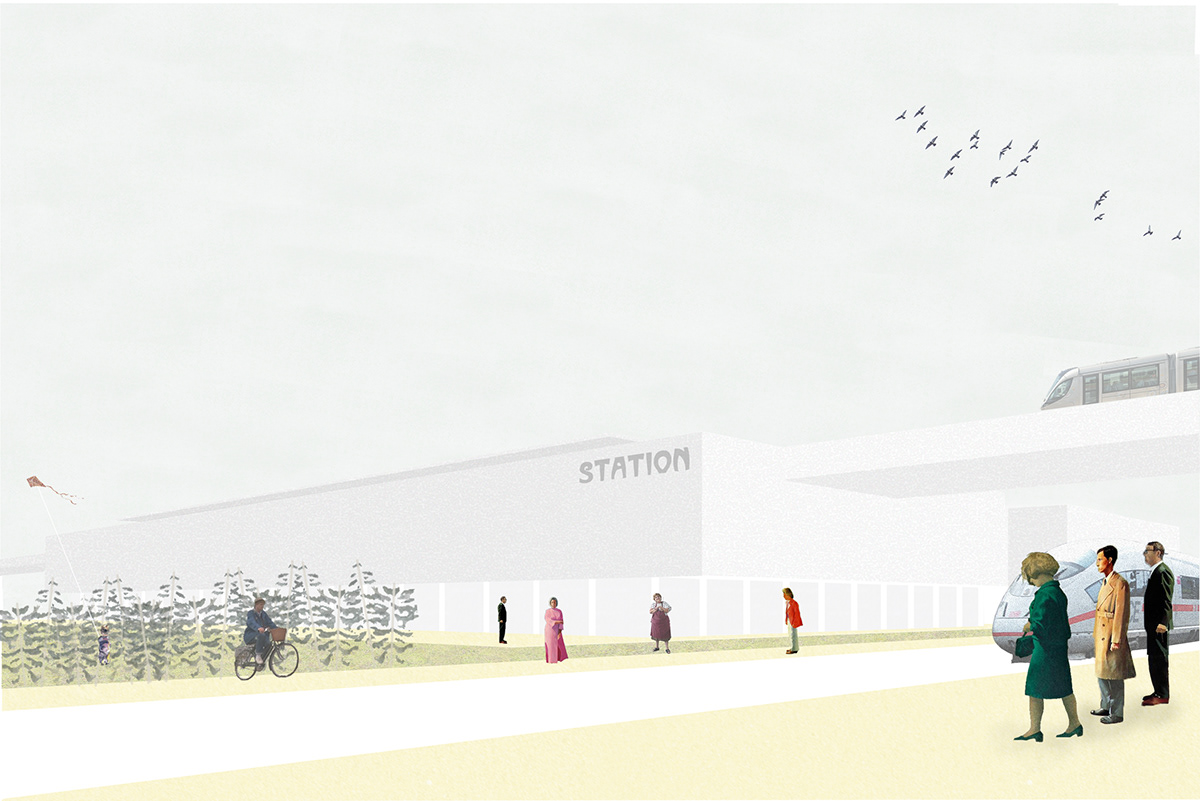
Exploratory Project: Milano Meda energy hub
